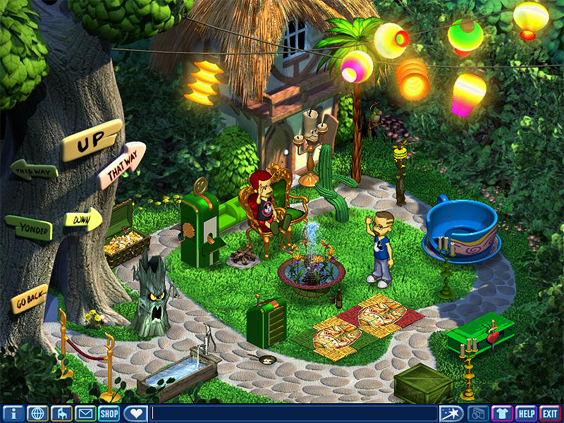According to Douglas Kellner, "For Baudrillard, modern societies are organized around the production and consumption of commodities, while postmodern societies are organized around simulation and the play of images and signs, denoting a situation in which codes, models, and signs are the organizing forms of a new social order where simulation rules."
I think of it in this way: In modern societies I would work, get paid cash, and then I can buy a Black Sabbath record album that I would then play on a record player at home. In postmodern societies, I am not working or buying anything tangible (cash, album, record player), instead I can simulate work (play with a derivative on the stock exchange), get paid with a code that is transferred to my bank account (now I have "money" in my account), purchase a virtual record player program on my computer (the program promises to simulate the scratches of a needle on vinyl) and play a digital copy of "War Pigs" (which has now been copied and downloaded for the billionth time).
Again, nothing tangible is produced or consumed; instead, signs, images, and codes are (re)transferred, (re)reproduced, and (re)copied, all in an orgiastic playfulness.
But let me get to the real point of my blog. Baudrillard opens his book, Simulacra and Simulation, in medias res with this point about Jorge Luis Borges' story "Del Rigor en la Ciencia" ("On Exactitude in Science"):
"If once we were able to view the Borges fable in which the cartographers of the Empire draw up a map so detailed that it ends up covering the territory exactly...as the most beautiful allegory of simulation, this fable has now come full circle for us, and possesses nothing but the discrete charm of second-order simulacra."What does Baudrillard mean by calling the Borges story "second-order simulacra"? He won't tell us until we get some pages into his book, and then he tells us that he has divided history into four epochs, each ruled by society's peculiar relationship with images or icons. He calls these paradigmatic shifts in our relationship with images, "the precession of simulacra." Here they are in order:
- the image is a reflection of a profound reality;
- the image masks a profound reality;
- the image masks the absence of a profound reality;
- the image has no relation to any reality;
Baudrillard, then, calls the Borges story an allegory of an image that masks a profound reality. If you recall, in the story the map-makers create a map of the kingdom that is the size of the kingdom and coincides with it point by point. After the life-size map is cast out as useless, beggars and animals live in the map, taking it for the ruins of the real kingdom. The map of the kingdom is, therefore, a mere corruption of a profound reality.
In other words, Baudrillard believes that Borges is quite conservative in his yearning for reality. "Del Rigor en la Ciencia" is an argument for the limits of what science must do with reality; it is absurd to be so exact and rigorous in science because then we end up with simulacra that masks and corrupts reality.
Baudrillard argues that we live in an age of pure simulacrum, in which the image has no relation to any reality whatsoever. So he inverts the Borges story and argues that the map precedes the kingdom, the kingdom is based on the map, and it is only the map that survives as a copy without an original. There was no kingdom to begin with, there was only a life-size map of the kingdom.
And we are the animals and beggars that inhabit the virtual kingdom.
